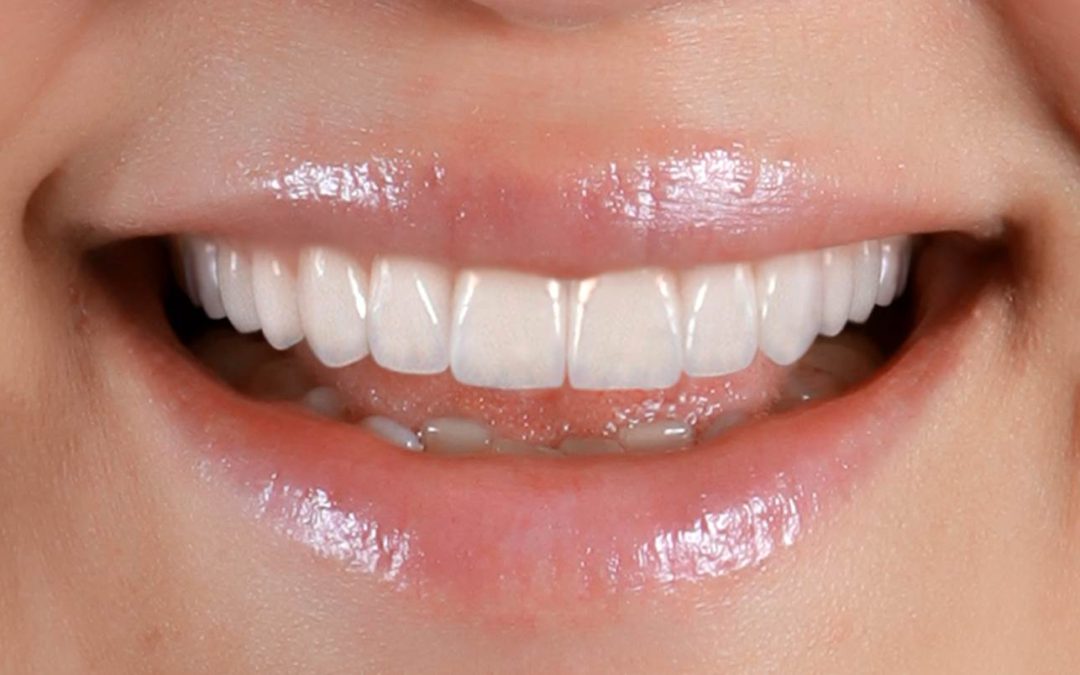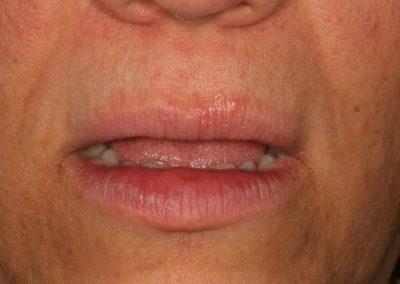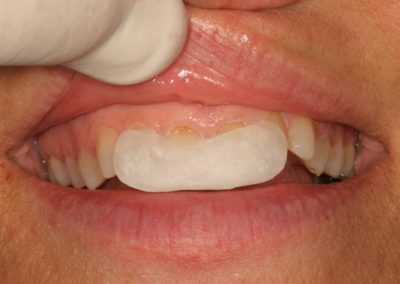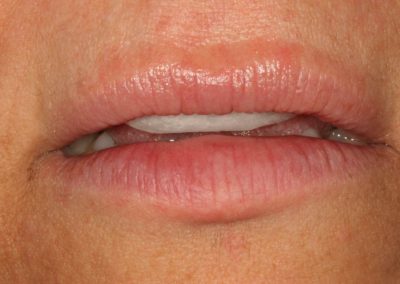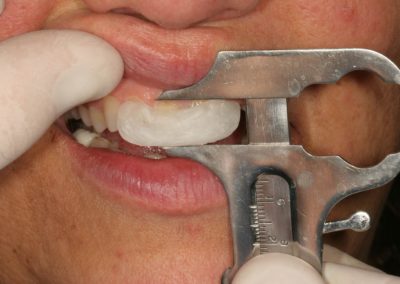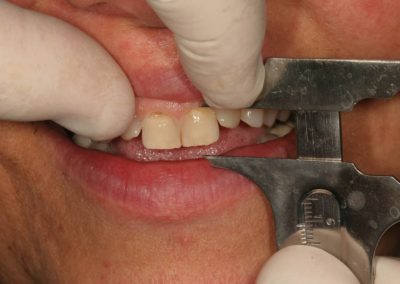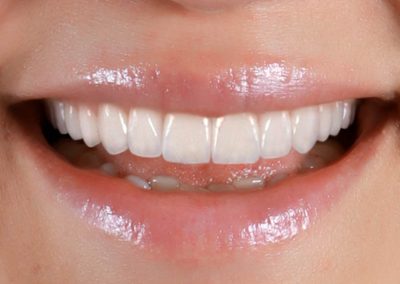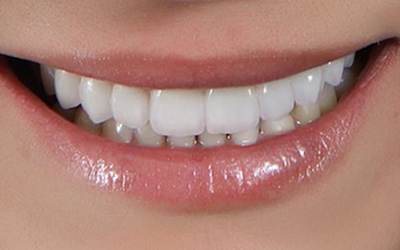According to a study conducted by the AACD, “virtually all Americans (99.7%) believe a smile is an important social asset”. A person’s teeth are one of the first things to be noticed when meeting someone. When restoring a person’s smile, usually, the goal is to create an ideal situation that mimics a youthful appearance. It is crucial then to understand the concepts of facial esthetics and what one perceives as being a youthful appearance. A critical component in creating an ideal case is in considering the vertical dimension.
The vertical dimension is the distance between any area on the upper jaw and any area on the lower jaw when the teeth are in centric occlusion. These three factors establish the vertical dimension during a person’s development: the eruption of teeth, growth of the ramus, and gonial angle of the mandible. Overtime vertical dimension of occlusion can decrease by parafunction or tooth loss, and the result is a collapsed bite.
Determining if the Vertical Dimension has Decreased
One of the critical issues in deciding how to proceed is determining if the opening of the vertical dimension is necessary. If it is determined that indeed it needs to be opened, the next question to ask is by how much? Establishing the proper length to restore teeth is a critical factor in the success of a case and the overall happiness of the patient.
Since we have already determined that the smile is one of the most important features a person has, being able to see the teeth when a person is at rest or in repose is essential in achieving a youthful appearance. When there is no tooth exposure, a person can seem older than they are. In terms of facial esthetics, incisal tooth exposure is critical in giving a patient a youthful vibrant result. If a patient presents with no incisal exposure in repose, it is a good indication that the vertical dimension needs to be opened. Figure 1 shows the patient in repose with no tooth exposure.
Other indicators that a patient may have lost vertical dimension is if the corners of the mouth turn down as if there is a reverse smile. Some of the questions to ask are as follows:
- From a profile view, is the chin more forward?
- Do the masseter muscles appear to be overdeveloped?
Once this has been evaluated, and it is determined that a loss of vertical dimension is evident, a complete wax rendering can begin. This rendering will decide what needs to occur to restore the patient.
Steps In Wax Rendering
To begin a wax-up, the first thing that must be determined is, what is the ideal vertical opening? To do this, one must figure out how long the centrals need to be to have teeth exposure in the repose position. Once this is established, the rest of the treatment will be designed based on this length. Ideally, there should be at least 1 mm exposure past the upper lip. Use the following steps to get this measurement:
- Use white rope wax approximately the size that will cover the anterior teeth
- Flatten the wax, and after drying the surface of the teeth, place the flat wax over the upper anterior teeth and flatten it so that it will only add length and not add any labial volume. (see fig 2)
- Ask the patient to relax so that they are in a repose position and observe the amount of wax exposure. If it’s too much, use your finger to push the wax upwards slowly to shorten the exposure. (see fig3)
- If the incisal length is too long, out of the parameters to be considered a reasonable length, add volume labially by using another flat wax on top of the previous wax. This volume will push the lips a little outwards, reducing the need to increase too much length. This is also an excellent way to push out the upper lip and create lip volume without surgery.
- Once the length and fullness have been established, measure it using calipers for length and overjet. By placing the open caliper against the tooth, we can see how much tooth lengthening will be necessary to achieve the desired results. (see fig4 and fig 5)
Once our lab receives that measurement, we wax one central to the desired length of the tooth, and we wax one lower anterior tooth approximately 8 mm to 9 mm. We then measure from the incisal edge towards the gingival, a 2 mm distance, and we make a horizontal line on the lower waxed tooth. On the articulator, we will open the bite (vertical dimension) as we place the selected waxed-up maxillary tooth to the line on the lower tooth. This placement will give us the ideal opening. Generally, it is recommended to have a 2 mm overbite and 2 mm overjet.
By using this technique, the case always starts with aesthetic considerations, and then aesthetics are coupled with occlusion and functional designs that support the newly created length. Achieving optimal results in everything from veneer cases to full mouth rehabilitation starts with a great design. At Opus One Laboratories, the focus has always been on education and finding ways to create beautiful, functional cases that are predictable. Our lab is known as one of the best in full-mouth and large reconstruction cases. With a smile holding such an important place in society, designing cases that take into consideration the importance of the result is what keeps Opus One Laboratories focused on finding new ways to create attractive new smiles. (see fig6)
Recent Opus News:
The Importance of Utilizing The Kois Facial Analyzer
In dentistry, there have always been challenges in transferring patient oral information to mount models accurately. The key to patient satisfaction is trying to minimize the need for adjustments as much as possible. Over the years, many tools have been developed to address the issues that occur regularly.
Using Time Tested Case Planning to Give Back to an American Hero
Opus One Laboratories has built its reputation on its expertise in handling large reconstruction cases and complex cosmetic cases. We have been changing people’s lives since 2000. We were honored to be asked to participate in the Smiles for America program and help give a very deserving person a new smile.
Complex Cases: A Multi-Disciplinary Approach to Successful Results
As technology in dentistry continues to advance, there are more options than ever available to utilize in treating a patient’s dental needs.

